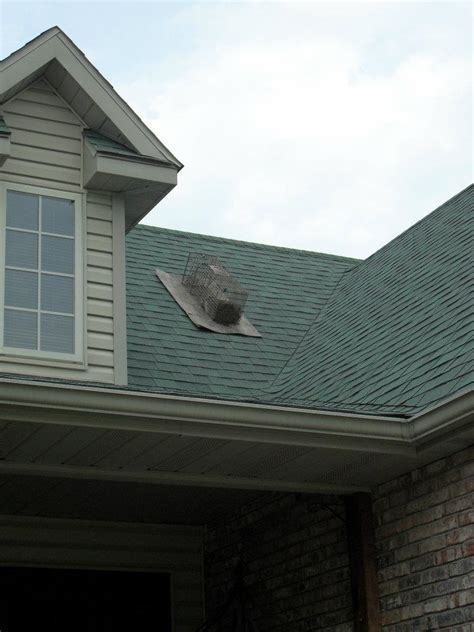Long-Term Solutions for Raccoon Roof Problems
Raccoons are notorious for their knack for getting into attics and causing significant damage to roofs. A few droppings here and there might seem manageable, but ignoring the problem can lead to costly repairs and even structural issues. This article delves into effective, long-term solutions for dealing with raccoon roof problems, focusing on prevention and humane removal. We'll explore why raccoons are attracted to roofs, the damage they cause, and most importantly, how to prevent future infestations.
Why Do Raccoons Choose Roofs?
Raccoons are intelligent and adaptable creatures. They seek out shelter, food, and nesting places, and unfortunately, your roof often fits the bill. Several factors attract them:
- Accessibility: Gaps, holes, and damaged areas in your roofline offer easy entry points. Loose or missing shingles, damaged flashing around chimneys and vents, and poorly sealed soffits are common access routes.
- Shelter and Nesting: Attics provide safe, dry, and secluded spaces ideal for raising young. The warmth in the attic during colder months is also a significant draw.
- Food Sources: While not their primary attraction, raccoons might find food sources in your attic, such as insects, bird nests, or even stored items.
The Damage Raccoons Can Inflict
The damage caused by raccoons goes beyond simple mess. Their activities can lead to:
- Structural Damage: Raccoons often tear into insulation, gnaw on wood, and even damage electrical wiring. This can lead to significant structural weakening and costly repairs.
- Health Hazards: Raccoon droppings and urine contaminate attic spaces, creating unsanitary conditions and potentially exposing your family to diseases like leptospirosis and rabies.
- Odor Problems: The ammonia in raccoon urine creates a persistent and unpleasant odor that can permeate your home.
- Pest Infestations: Raccoons can inadvertently introduce other pests like fleas, ticks, and mites into your home.
How to Get Rid of Raccoons in Your Attic Humanely
Simply trapping and removing raccoons is often only a temporary solution. You need a multi-pronged approach that addresses both immediate removal and long-term prevention.
- Professional Removal: Contact a wildlife removal specialist. They are experienced in safely and humanely removing raccoons from your attic while ensuring no young are left behind. They will also identify and seal entry points.
- Exclusion and Prevention: Once the raccoons are gone, it's crucial to prevent future infestations. This involves thoroughly sealing all potential entry points, repairing damaged areas of your roof, and installing proper ventilation to discourage them from returning.
What to Do About Raccoon Droppings and Urine Contamination
Cleaning up after a raccoon infestation is crucial for health and safety. Do not attempt this yourself without appropriate safety gear.
- Professional Cleaning: Hire a professional biohazard cleaning service. They have the equipment and expertise to safely and thoroughly remove contaminated materials, disinfect surfaces, and deodorize the affected area.
Long-Term Prevention Strategies: Keeping Raccoons Away for Good
The best way to deal with raccoon roof problems is to prevent them from happening in the first place.
- Regular Roof Inspections: Regular inspections (at least annually) will allow you to identify and repair minor damage before it becomes a major problem.
- Proper Roof Maintenance: Ensure your roof is in good condition, with all shingles intact and flashing properly sealed.
- Secure Entry Points: Seal any gaps or holes in your roofline, including around chimneys, vents, and soffits. Use materials raccoons can't easily penetrate.
- Remove Attractants: Keep garbage cans securely covered, remove bird feeders, and store pet food indoors.
- Install Chimney Caps and Vent Guards: These prevent raccoons from using chimneys and vents as access points.
Frequently Asked Questions (FAQ)
How much does raccoon removal cost?
The cost of raccoon removal varies depending on several factors, including the severity of the infestation, the accessibility of the attic, and the location. It's best to get quotes from several wildlife removal professionals.
What is the best way to prevent raccoons from entering my attic?
A combination of regular roof inspections, sealing potential entry points, and installing protective measures like chimney caps and vent guards is the most effective long-term prevention strategy.
Are raccoons dangerous?
While generally avoiding humans, raccoons can become aggressive if cornered or feel threatened, especially if they are protecting young. They can carry diseases, so it's crucial to avoid direct contact.
What should I do if I see a raccoon in my attic?
Do not approach the raccoon. Contact a wildlife removal specialist immediately.
By implementing these long-term solutions, you can effectively eliminate raccoon roof problems and protect your home from the damage and health hazards they pose. Remember that a proactive approach, focusing on prevention and humane removal, is the key to a raccoon-free roof.

